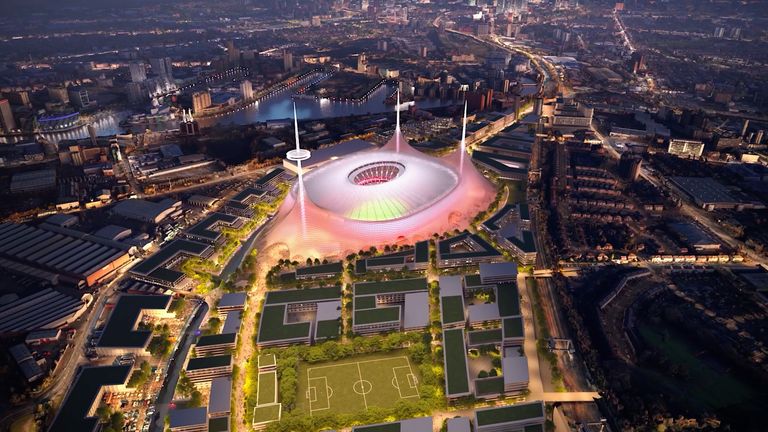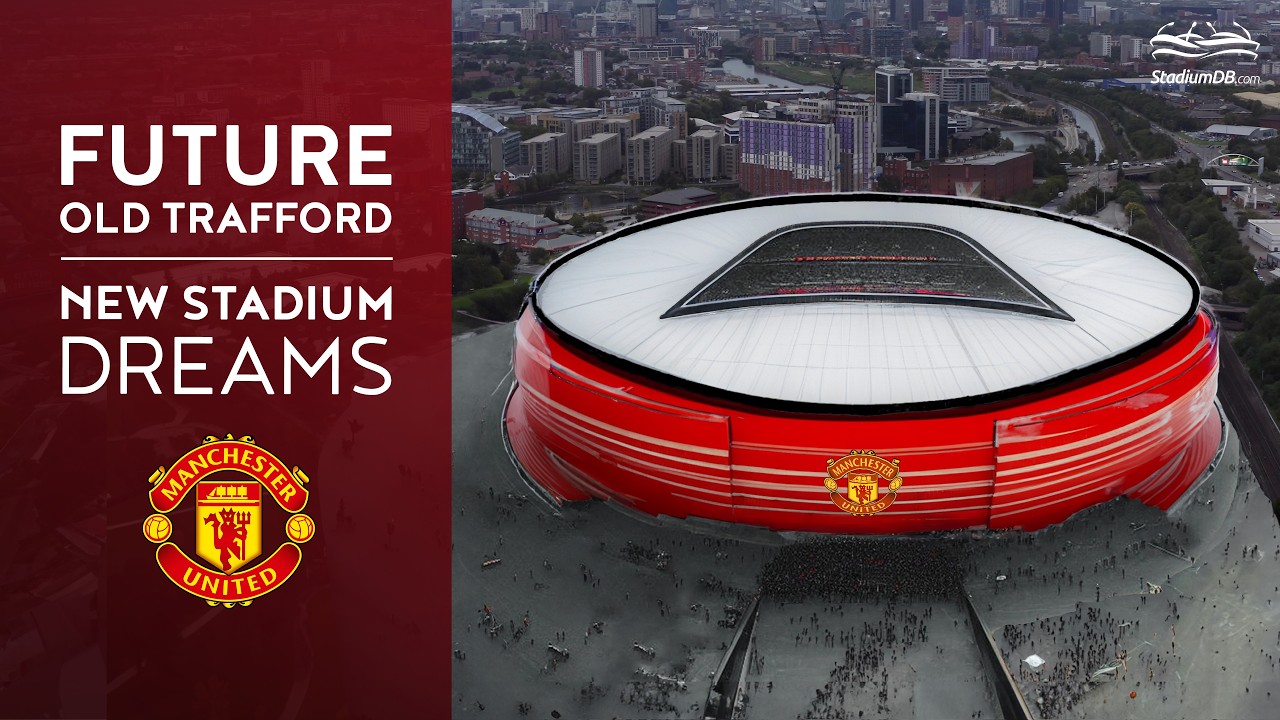English Premier League big name Manchester United have announced plans to build the biggest stadium in the UK. According to the report it will be an “iconic” new £2bn 100,000-seater ground close to Old Trafford. It is said that once construction is complete, the club’s existing home is likely to be demolished.
Manchester United Set to Build a £2bn 100,000-seater Ground Stadium
Manchester United co-owner Sir Jim Ratcliffe said he wanted to build the “world’s greatest football stadium”, which the club hopes could be finished in five years. United’s announcement comes after an extensive consultation process around whether to develop the existing stadium or build a new one.

Old Trafford has been Manchester United’s home since 1910. The club would continue to play at Old Trafford until the new stadium was ready. Senior club sources have previously said it would not be cost effective to shrink it for use as a home for United’s women’s and youth teams.
The architects at Foster and Partners, who is said to be responsible for the designing of the project, said the new stadium would feature an umbrella design and a new public plaza that is “twice the size of Trafalgar Square.” It is also said that the design will feature three masts described as “the trident”, which the architects say will be 200 metres high and visible from 25 miles away.
Manchester United, currently £1bn in debt, are yet to say how they plan to pay for the stadium. Club chief executive Omar Berrada said it was “a very attractive investment opportunity” and he was “quite confident we’ll find a way to finance the stadium”.

Football finance expert Kieran Maguire said the development can be financed because income from a “multi-functional stadium will more than outweigh the additional interest costs”. The stadium will form part of a wider regeneration of the Old Trafford area, predicted to be the biggest such project in the United Kingdom.
United say the entire project has the potential to create 92,000 new jobs, will involve the construction of 17,000 homes and bring an additional 1.8 million visitors to the area annually. They add the project will be worth an additional £7.3bn per year to the UK economy.







































